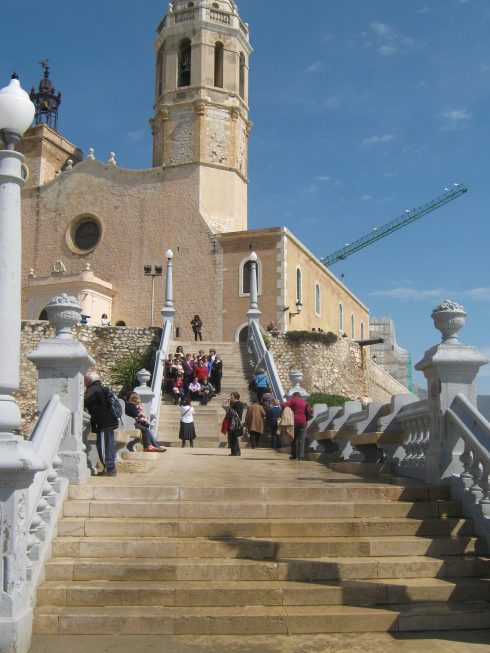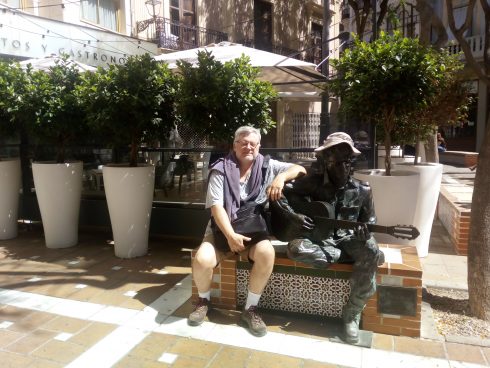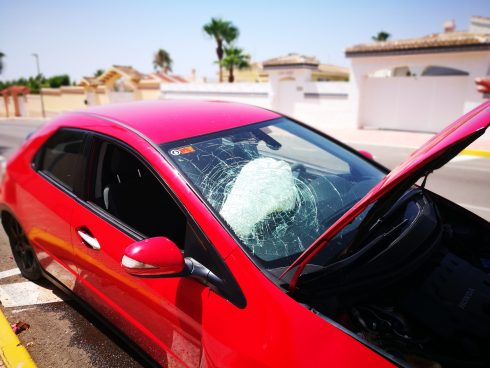San Sebastian wasn’t originally on our agenda, but we were tired of the meseta heat and treated ourselves to a bit of Cantabrian coast with a solid cinema pedigree.
Desire (1936) was one of the first international films to make use of Spain’s spectacular scenery.
Gary Cooper is on his way from Paris to San Sebastian in Guipúzcoa for a holiday, when he runs across jewel thief Marlene Dietrich, who uses him to smuggle some jewels into Spain (Cooper is only smuggling cigarettes, although his greatest crime here is his singing).
Once there, after an eventful trip in which donkeys play a prominent part, they meet up in the Hotel Continental Palace, (opened in 1884 and closed in 1972).
Unfortunately the stars never made it to Spain in the year for whom the bells tolled, although a film crew was despatched to film the images that formed a backdrop.
As a portal for Spanish tourism, Cooper’s phrase “what a country! What eggs!” must be one of the most original tourist slogans ever invented, and one that surprisingly hasn’t been borrowed by the Spanish authorities. Yet.
About half an hour into the film we see brief scenes of San Sebastian’s famous curving Concha beach, its promenade ‘Paseo Nuevo’ with its tamarind trees and the Alderdi Eder square, where the Town Hall stands.

San Sebastian must have been extraordinarily international in the 30s; according to the film, the local newspaper, ‘Diario de San Sebastian’, was published entirely in English (which is even more amazing when considering that it had ceased publishing back in 1887), and the customs officers who discover Cooper’s cigarettes speak impeccable Oxford English.
The looming Urgull Mountain can also briefly be seen in the film, with its castle and English cemetery, a reminder of the siege of the city in 1813, when the Duke of Wellington defeated Napoleon’s troops (and then rather churlishly burnt the town).

When Cooper and Dietrich leave the hotel they drive through some ‘typical’ Spanish scenery, replete with rocky crags and rushing rivers.
They also drive out of Toledo, across the San Martín bridge with the castle of San Servando (now a Youth Hostel) behind them. Their journey ends at the Villa Rubio in non-existent Guadarale.
The Battle of Britain (1969) was of course largely filmed in Spain. Where else, as George Clooney might have said.
San Sebastián was used to represent Berlin as it received its first allied bombing attack as a reprisal for the ‘accidental’ bombing of London, using the Avenida de la Libertad and the streets between Calles Bergara and Fuenterrabia, from which local people hired as ‘German’ extras had to be threatened with expulsion from the set if they laughed during the air raid.

The clearly labelled Kürtz Café of Berlin was in reality the Cafetería Avenida XXI.

When the bombs start to fall on Berlin/San Sebastian, the extras start running into the Metro on the corner of Idiakez Street, although there was in fact no Metro there, and not even steps to descend.
Some of the aerial scenes of unmistakably English countryside were filmed along the Urbasa mountain range in Navarra, northern Spain.
In Sabotage (2000) an eccentric comedy about the Battle of Waterloo, with Stephen Fry as the Duke of Wellington, a role he also played in ‘Black Adder.’
Our thanks to Denis Murphy, who was dialogue coach and script editor on this film for providing most of the information below.
Filming began on the 2nd of August 1999 and continued until the 6th in the Colegio Seminario de San Sebastian, Guipuzcoa, from beyond whose walls a view of the city can be seen. Inside they created the set for the operetta in which a cock and a damsel perform until Napoleon arrives to address his gathered troops.
Before we enter the theatre, we see troops milling outside, although the exterior is in reality the Church of Los Santos Juanes in Bílbao, Vizcaya.
The film’s director, Esteban Ibarretxe, informed us that the Guadalajara scene in the movie was the one where they launched the chariot in which Napoleon was escaping from the Prussians, into the inland waters of the Embalse (reservoir) de Sacedón.
The reservoir in question is the Embalse de Entrepeñas, just north of the town of Sacedón, the same place where we killed Bambi in fact; or it might have been as Thelma had by then got us hopelessly lost.
Ironically, much of the filming of Waterloo took place just around the corner of the site of a real defeat by Napoleon’s troops at the battle of Vitoria near the village of Tres Puentes as the French forces were being chased out of Spain on the 21st June 1813. For this reason there is a statue of the Duke in the main square of Vitoria.
Our journey was cut short by a couple of days when Thelma was personally informed by Boris Johnson that she would be quarantined for 14 days on her return to Britain, precipitating her dash to Valencia airport to grab a flight to Edinburgh, where she doesn’t live.
As if a sign from the Gods that all was well, we were confronted at the airport by a bus carrying a large Thelma and Louise poster which, disappointingly turned out to be an advertisement for car insurance, or some such thing.

-focus
Predictably, Thelma ran after it, shouting hysterically, and that was the last I saw of her.









